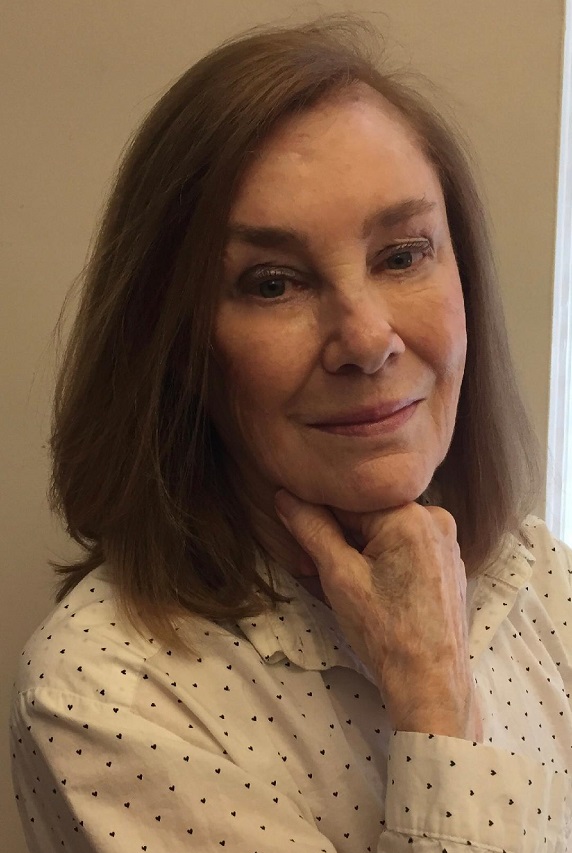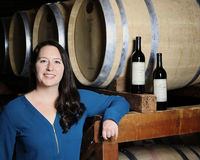|
|
 |

Burgess Cellars can trace its origins to the 1880s, when Italian immigrant Carlo Rossini planted grapes and started a wine cellar with the help of a team of mules and other hard-working settlers in the region. Fast-forward to a century or so, when Tom Burgess purchased the estate. Today, his sons operate the winery, with Steven serving as president of Burgess, and James as director of vineyard operations.
After Kelly Woods received a degree in Viticulture & Enology from  University of California at Davis, she went on to work at Napa’s Seavey Vineyard and Bryant Family Vineyard, followed by a stint a Morton Estate Winery in New Zealand. While she was working at Sequoia Grove Vineyards, Stephen Burgess offered her a job as winemaker at Burgess Cellars, where she began work in January of 2013. Earlier this year, on February 13, 2018, she was promoted to Winemaker-General Manager: University of California at Davis, she went on to work at Napa’s Seavey Vineyard and Bryant Family Vineyard, followed by a stint a Morton Estate Winery in New Zealand. While she was working at Sequoia Grove Vineyards, Stephen Burgess offered her a job as winemaker at Burgess Cellars, where she began work in January of 2013. Earlier this year, on February 13, 2018, she was promoted to Winemaker-General Manager:
Marguerite Thomas (MT): Congratulations on your promotion, which expands your responsibilities beyond wine production to include a focus on hospitality, sales, marketing and administration. I’m sure you’re happy about the promotion, but it sounds to me as if you’ll actually be taking on several full-time jobs! Will robots be involved, or will you really manage to cover all these areas of responsibility?
Kelly Woods (KW): Thank you, and, yes, some days I WISH robots were involved! But I’m confident in my abilities to wear multiple hats and remain organized. I have always loved to challenge myself, and taking on the General Manager role alongside the Winemaker role is just another challenge that I’m excited about.
MT: You are very hands-on in the vineyards as well as the winery. The two estate vineyards, Winery Ranch Vineyard and Haymaker Vineyard, are both located on Napa’s legendary Howell Mountain, and are situated 1000 feet above the valley floor. How does this particular location affect the grapes, and do mountain grapes such as these play a role in the ultimate taste of the wine?
KW: I feel like the Burgess Cellars vineyards are in a sweet spot on Howell Mountain. We are just above the fog line, which ensures longer and more consistent growing days. This guarantees that our grapes attain full maturity with maximum flavor, tannin, and color development. Our elevation and exposure along with our volcanic soils really help form the flavors and structures of our wines.
MT: I would imagine that one reason Steven Burgess brought you on board to help direct the forward progress of this 45-year-old estate is to bring it more up to date in winemaking technology, and perhaps more in line with contemporary palates. What thoughts and/or goals about these issues might you have?
KW: As a young, ambitious winemaker I definitely came in with grand ideas of the changes that I was going to make to modernize the facility. However, once I started working in the vineyards and winery and learning the intricacies of making wine in a historic facility such as Burgess Cellars, I realized that the rusticity of the estate lends itself to the style of the wines. So instead of making huge changes, we made some small changes that had big effects on the wines, such as changing the aging protocol for the wines and changing the way we harvested and fermented the fruit.
MT: You’ve come a long way from Santa Maria, the bucolic community on California’s Central Coast where you were raised. Were you involved in the wine world there in any way, or did your passion for wine develop later?
KW: My passion for wine was something that developed over time. With so many wineries right in our backyard, my family spent plenty of time at tasting rooms and we always had wine on the dinner table, but I didn’t even consider winemaking as a career until it came time to apply for college. I grew up wanting to become a veterinarian but that dream faded when I started working in a vet clinic during high school. College applications were due and I was still determined to go to UC Davis, but I had to choose a major other than vet med. That’s when a friend of the family suggested I go into the Viticulture and Enology program. And here I am, many years later, with the best job in the world!
MT: Have you had a mentor who’s influenced you during your career so far?
KW: I have been incredibly fortunate to work with some great winemakers! The first winemaker that took a chance on me as a fresh-out-of-college and very ambitious intern was Matt Reid [Burgess Cellars’ consulting winemaker]. I learned so much that first harvest working with him. He is also the winemaker that put Steve Burgess in touch with me when he was looking for a new winemaker. Another mentor in my career is Molly Hill of Sequoia Grove Winery. I worked with her for 4 years and looked up to her as one of the top female winemakers in Napa. Her best piece of advice to me was that no matter what decision I make, be confident in it whether it turned out to be the right decision or not.
MT: I saw a charming photo of you surrounded by a herd of goats. Were they there for the rosé you’re holding? (And by the way, how do you feel about rosé in general? I have a few east coast friends/colleagues who generally don’t like rosé, don’t think it’s serious; they are men--I can’t think of women I know who feel that way about rosé.)
KW: As part of our sustainability practices, we contemplated getting goats for quite a while, and then one day when I’m on a sales trip in Texas I get a text from Steve and it’s just a picture of twelve 2-3 week old baby goats in the back of his truck. We had to bottle feed them for a few months and they became very attached to us. In the picture with the rosé, we originally had the idea of them surrounding a picnic blanket with a spread of cheese and rosé for our spring release mailer. The goats had other plans and did not take direction well. They just wanted to jump and play and eat the bread and cheese.
Personally, I love rosé. But I have had some very poorly made pink wines that give rosé a bad reputation. It’s not an easy wine to make, and there are so many different styles that it can be a very polarizing wine. I don’t want my rosé to be serious, I want it to be something I can sip while sitting on the porch watching the sun set at the end of a gorgeous summer day. Rosé should not be a wine that requires a lot of thought when drinking it. Just drink it and enjoy it.
MT: You are in an industry where as a woman you are in the minority (approximately 10% of California’s wineries have a woman as lead winemaker). Have you ever found this challenging--for example, communicating with staff in the winery and/or vineyards exactly how you want something done?
KW: It’s true, the wine industry has been predominately an “Old Boys Club”, but that’s really been changing and evolving immensely over the past decade or so. I’ve been fortunate to work with great vineyard and winery crews in my career as a winemaker and I haven’t had any challenges with staff. When I started at Burgess Cellars the winery and vineyard crews had all been employees of Burgess for 15-25 years and I did have some worries that if I asked for certain processes to be changed, I would get some pushback. That wasn’t the case at all! Everyone was willing to listen to my reasoning and try something new and they respected me, not just as a woman in leadership, but as a winemaker in general. At the end of the day, we all just want to make the best wine possible and have a good time while doing it!
MT: Can you give us the short answer to this question: what is Santa Maria Tri-Tip?
KW: Santa Maria style tri-tip is…heaven. My mouth starts watering just thinking about it. It dates back to the days of the vaqueros driving cattle through the Santa Maria Valley in the 1800s. Huge feasts would be had where steak (generally tri-tip or top block because those weren’t considered to be quality cuts of meat) would be dry rubbed in salt, pepper, and garlic powder, and cooked slowly over white-hot oak coals. The type of oak used for proper SM BBQ is red oak, or native coastal live oak from the area, which makes a big difference in flavor. Traditionally it should be cooked on a Santa Maria Style BBQ pit with a large iron grill so you can adjust the height of the meat over the coals. The tri-tip should NEVER be marinated, and if your fire is burned down correctly, it should take about 2 beers worth of time to cook to perfectly medium rare. Anyone who was born and raised in Santa Maria has tri-tip coursing through his or her veins!
|
 |
|